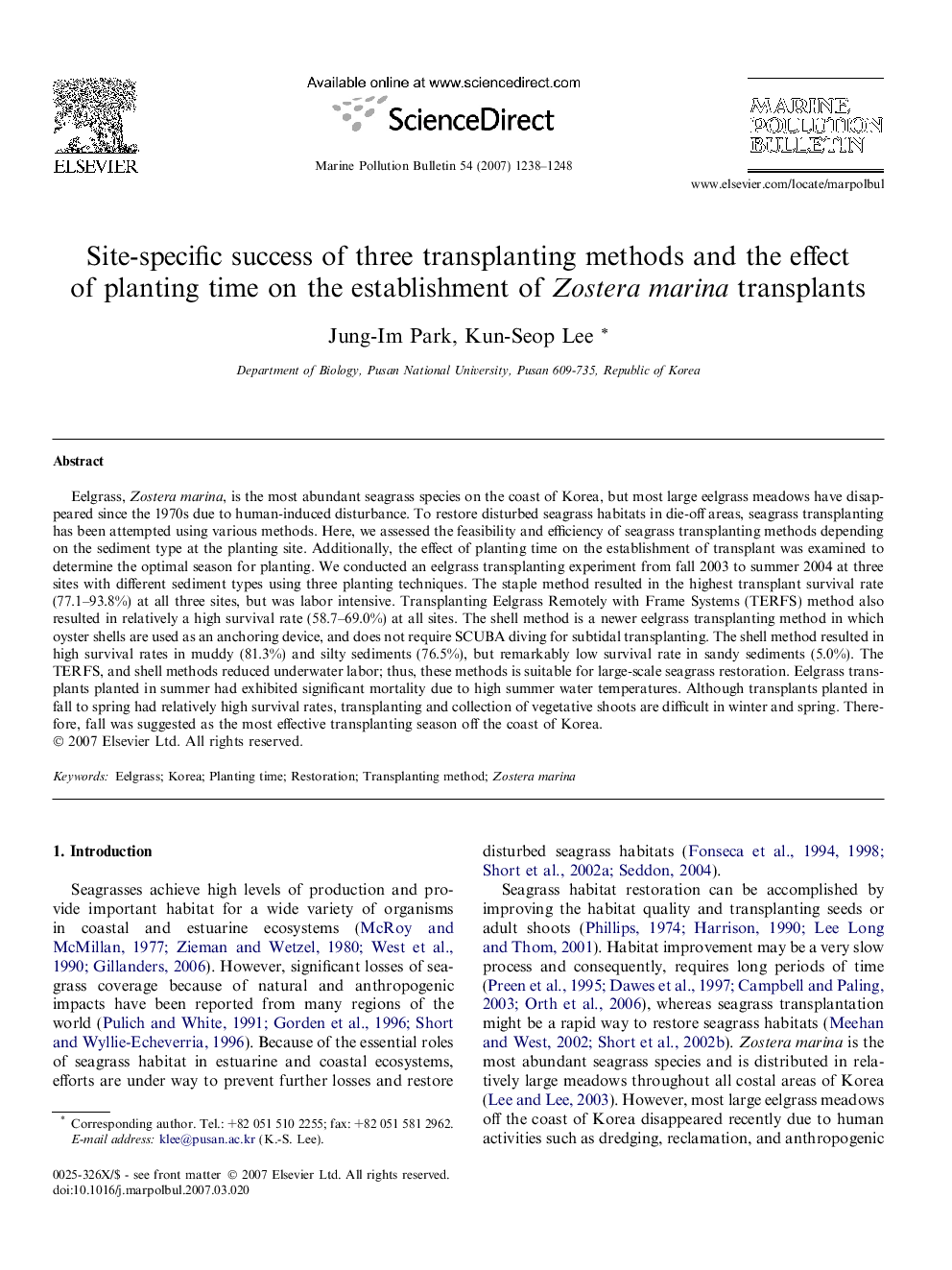| کد مقاله | کد نشریه | سال انتشار | مقاله انگلیسی | نسخه تمام متن |
|---|---|---|---|---|
| 4477847 | 1315740 | 2007 | 11 صفحه PDF | دانلود رایگان |

Eelgrass, Zostera marina, is the most abundant seagrass species on the coast of Korea, but most large eelgrass meadows have disappeared since the 1970s due to human-induced disturbance. To restore disturbed seagrass habitats in die-off areas, seagrass transplanting has been attempted using various methods. Here, we assessed the feasibility and efficiency of seagrass transplanting methods depending on the sediment type at the planting site. Additionally, the effect of planting time on the establishment of transplant was examined to determine the optimal season for planting. We conducted an eelgrass transplanting experiment from fall 2003 to summer 2004 at three sites with different sediment types using three planting techniques. The staple method resulted in the highest transplant survival rate (77.1–93.8%) at all three sites, but was labor intensive. Transplanting Eelgrass Remotely with Frame Systems (TERFS) method also resulted in relatively a high survival rate (58.7–69.0%) at all sites. The shell method is a newer eelgrass transplanting method in which oyster shells are used as an anchoring device, and does not require SCUBA diving for subtidal transplanting. The shell method resulted in high survival rates in muddy (81.3%) and silty sediments (76.5%), but remarkably low survival rate in sandy sediments (5.0%). The TERFS, and shell methods reduced underwater labor; thus, these methods is suitable for large-scale seagrass restoration. Eelgrass transplants planted in summer had exhibited significant mortality due to high summer water temperatures. Although transplants planted in fall to spring had relatively high survival rates, transplanting and collection of vegetative shoots are difficult in winter and spring. Therefore, fall was suggested as the most effective transplanting season off the coast of Korea.
Journal: Marine Pollution Bulletin - Volume 54, Issue 8, August 2007, Pages 1238–1248